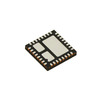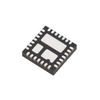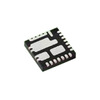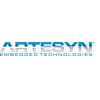Manufacturer Part Number
SIC417CD-T1-E3
Manufacturer
vishay-siliconix
Introduction
The SIC417CD-T1-E3 is a versatile power management integrated circuit from Vishay-Siliconix's microBUCK® series, designed to efficiently manage voltage regulation through both step-down (buck) synchronous and linear (LDO) modes.
Product Features and Performance
Integrated step-down (buck) and linear (LDO) regulators
Supports two output voltages: 0.5V ~ 5.5V at 10A for output 1, and 0.75V ~ 5.25V at 150mA for output 2
Wide frequency switching range from 200kHz to 1MHz
Designed for surface mount technology (SMT)
Operating temperature range from -25°C to 125°C
Compatible with a wide supply voltage range from 3V to 28V
Product Advantages
High efficiency due to synchronous buck topology
Versatility offered by the dual regulation modes (buck and LDO)
Compact design facilitated by PowerPAK® MLP55-32 packaging
Suitable for a variety of applications due to its wide voltage and temperature range
Key Technical Parameters
Number of Outputs: 2
Frequency Switching: 200kHz ~ 1MHz
Voltage/Current Output 1: 0.5V ~ 5.5V, 10A
Voltage/Current Output 2: 0.75V ~ 5.25V, 150mA
Voltage Supply: 3V ~ 28V
Operating Temperature: -25°C ~ 125°C
Quality and Safety Features
Manufactured to meet high-quality standards of Vishay-Siliconix
Packaged in Tape & Reel (TR) for secure and safe handling
Compatibility
Suitable for various electronic devices requiring efficient voltage regulation
Designed for use in systems requiring multiple voltage levels
Application Areas
Computing systems
Networking equipment
Consumer electronics
Industrial controls
Product Lifecycle
Status: Active
Not currently nearing discontinuation
Replacements or upgrades are typically announced in advance
Several Key Reasons to Choose This Product
Dual-mode voltage regulation for greater system flexibility
High current capability for Output 1 (10A)
Wide voltage input range suitable for diverse applications
High efficiency and reliability
Compact and robust package (PowerPAK® MLP55-32)uitable for space-constrained applications



 SIC413CB-T1-E3Vishay SiliconixIC REG BUCK ADJUSTABLE 4A 8SO
SIC413CB-T1-E3Vishay SiliconixIC REG BUCK ADJUSTABLE 4A 8SO SIC437BED-T1-GE3Vishay SiliconixMICROBUCK POWERSAVE
SIC437BED-T1-GE3Vishay SiliconixMICROBUCK POWERSAVE SIC433-02KODENSHI
SIC433-02KODENSHI SIC40C-12SA0J-V2Artesyn Embedded PowerIGBT Module
SIC40C-12SA0J-V2Artesyn Embedded PowerIGBT Module SIC417CDElectro-Films (EFI) / Vishay
SIC417CDElectro-Films (EFI) / Vishay